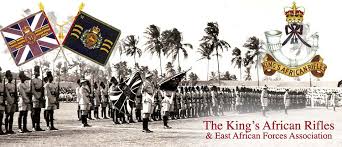Arthur was born on 24th April 1862 at Wellington College, Berkshire, one of six children born to Edward White Benson, the first headmaster of the College, who went on to become Archbishop of Canterbury from 1883 to 1896, and his wife, Mary (née Sidgwick and known as"Minnie"), who was a sister of the philosopher Henry Sidgwick. Arthur’s younger brother Edward Frederick Benson (1867 – 1940) also became a writer - E.F. Benson was best remembered for his Mapp and Lucia novels. Their sister Margaret Benson (1865 - 1936) became an artist, author and amateur Egyptologist.
In 1874, Arthur won a scholarship to Eton School from Temple Grove School, a preparatory school in East Sheen. In 1881, he went up to King's College, Cambridge, where he was a scholar (King's College had closed scholarships for which only Etonians were eligible) and achieved first-class honours in the Classical tripos in 1884.
Arthur became an essayist, poet and academic and served as the 28th Master of Magdalene College, Cambridge. He wrote the lyrics of Edward Elgar's Coronation Ode, including the words of the patriotic song "Land of Hope and Glory" (1902). His literary criticism, poems, and volumes of essays were highly regarded.
During the First World War, Arthur was a fellow at Magdalene College, Cambridge, where he was appointed Master of the college in December 1915 and served in that role until his death in 1925. He devoted his energies to academic and literary work, and was also a governor of Gresham's School.
Arthur C. Benson contributed to the war effort through his work as an educator and writer and he was involved in founding the Benson Medal in 1916 for meritorious works in literature. He edited the book “Cambridge Essays on Education”, which was published in 1919 towards the end of the war.
Arthur died of cardiac arrest at Magdalene on 17th June 1925 and was buried in St Giles's Cemetery, Cambridge.
"Land of Hope and Glory" was important during WW1, serving as a powerful symbol of British nationalism and the war effort, with lyrics that celebrated the nation's empire and encouraged its military might. Composed by Edward Elgar with lyrics by A.C. Benson, the song's patriotic themes were particularly resonant during the conflict and were frequently performed at events like the Proms, further solidifying its role in maintaining morale.
Symbol of nationalism: The song's lyrics, which refer to Britain's "Empire" and a call to God to make the nation "mightier yet," directly fueled the nationalist sentiment that was a major cause of the war.
Wartime morale booster: Because of its patriotic themes, the song was popular during the war and helped maintain the fighting spirit on the home front. It was part of the official war effort, though some of Elgar's other wartime compositions were less successful.
Chorus to “Land of Hope and Glory” lyrics:
Land of Hope and Glory, Mother of the Free,
How shall we extol thee, who are born of thee?
Wider still and wider shall thy bounds be set;
God, who made thee mighty, make thee mightier yet,
God, who made thee mighty, make thee mightier yet!
Source: Wikipedia. You can see one of A.C. Benson's books here
https://archive.org/details/in.ernet.dli.2015.201545 “\Meanwhile a Packet of War Letters” by A.C. Benson, 1916






